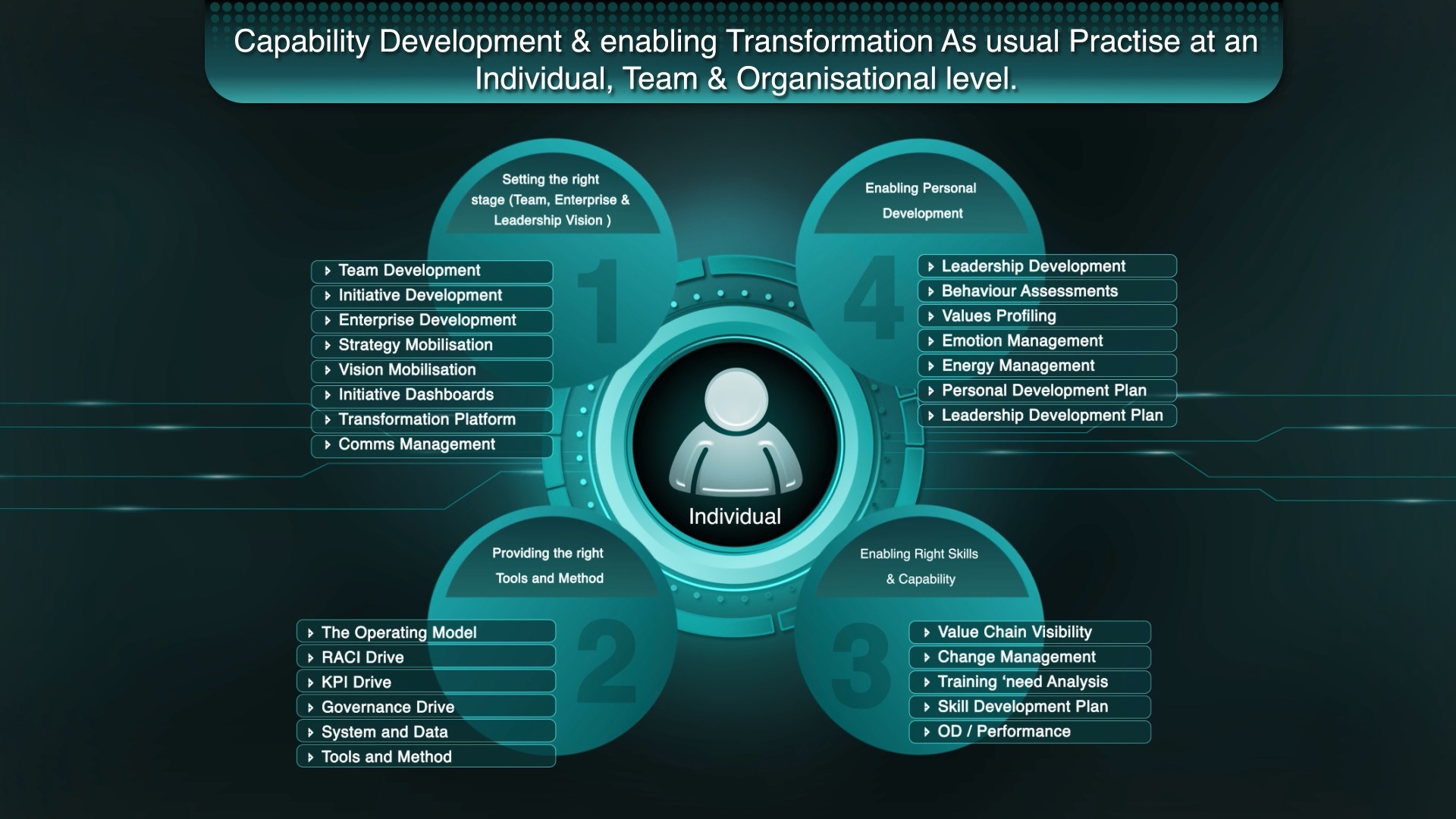Private Equity Services – Enterprise Business Transformation
An Introduction To Our Private Equity Services Platform
Modus Business Transformation Core Modules
Building, Driving and Sustaining your Business Transformation and embedding a 'Transformation As Usual' platform.
01 - Business Model Management - Manage and Adapt
Embrace the Business Model Management Hub to navigate and thrive in the ever-evolving business landscape with confidence and clarity.
Key Features:
• Value Creation Framework: A structured approach to identifying and
optimizing value drivers (e.g., revenue growth, operational efficiency) within
portfolio companies to maximize returns.
• Targeted Investment Strategies: Business model management helps in
defining specific investment theses, such as buy-and-build strategies,
turnaround opportunities, or sector-specific plays.
• Operational Due Diligence: Incorporates detailed analysis of operational
strengths, weaknesses, and scalability to ensure the business model aligns
with long-term growth potential.
• Risk Management and Mitigation: Proactively addresses risks associated
with the business model, such as market competition, regulatory shifts, or
technological disruption, ensuring portfolio resilience.
Importance:
• Maximizing Return on Investment (ROI): Business model management is
crucial for enhancing portfolio company performance and driving higher
returns for investors, a core objective of private equity.
• Strategic Alignment with Market Trends: Ensures that the business model of
portfolio companies is aligned with current and future market conditions,
allowing for better adaptation and sustainable growth.
• Risk Mitigation: A well-managed business model identifies and mitigates
operational and market risks, reducing the likelihood of underperformance or
financial loss.
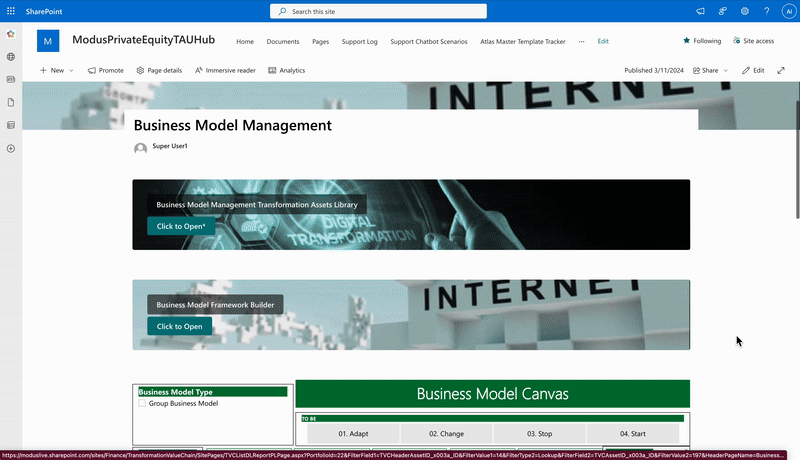
Benefits:
• Enhanced Portfolio Performance: By optimizing the business models of
portfolio companies, private equity firms can significantly improve
operational efficiency, revenue streams, and profitability.
• Informed Investment Decisions: Effective business model management
provides insights into the scalability and growth potential of investment
targets, leading to more informed and strategic investment decisions.
• Faster Time-to-Value: With a well-structured business model, portfolio
companies can implement value creation plans faster, accelerating time-to-
value and allowing private equity firms to realize returns sooner.
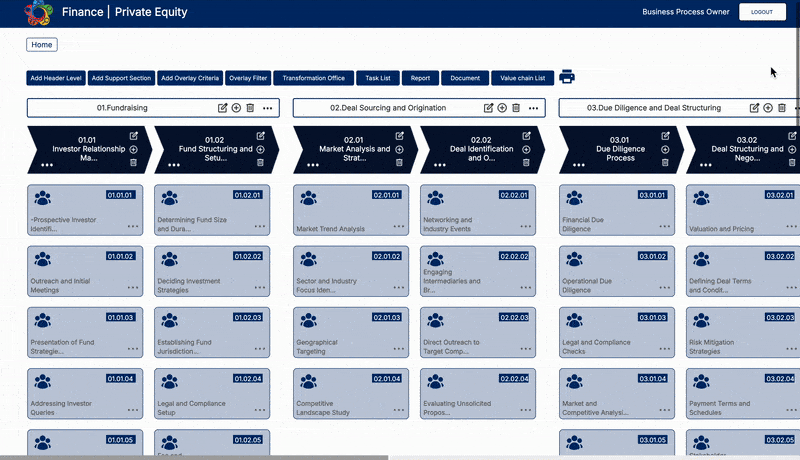
Benefits:
• Increased Profitability: By streamlining operations, reducing costs, and
optimizing resource allocation, the Value Chain Modeler enhances
profitability for portfolio companies, ultimately leading to higher returns for
investors.
• Faster Value Creation: The modeler accelerates the process of identifying
and implementing value creation initiatives, enabling private equity firms to
achieve their growth and profitability targets more quickly.
• Improved Scalability: A well-optimized value chain allows portfolio
companies to scale efficiently, whether through organic growth, mergers,
acquisitions, or entering new markets.
• Data-Driven Insights: With real-time data and KPIs, private equity firms can
make data-driven decisions that optimize performance across the portfolio,
ensuring that resources are used effectively and strategically.
02 - The Value Chain Modeler - Manage and Adapt
Harness the power of the Value Chain Modeler to drive your business forward with clarity, precision, and confidence.
Key Features:
• End-to-End Business Process Mapping: The Value Chain Modeler provides
a detailed map of all operational processes within portfolio companies, from
production to customer delivery, identifying areas for improvement and
efficiency gains.
• Cost and Revenue Analysis: It tracks and analyzes costs, revenues, and
profit margins at every stage of the value chain, helping private equity firms
optimize resource allocation and improve overall financial performance.
• Operational Efficiency Tools: The modeler identifies inefficiencies,
redundancies, and bottlenecks across different functions (e.g., procurement,
production, distribution) to streamline operations and reduce operational
costs.
Importance:
• Value Creation: A Value Chain Modeler is crucial for identifying operational
improvements in portfolio companies, optimizing value drivers like cost
efficiency, product quality, and customer service, thereby driving higher
returns on investment (ROI).
• Operational Transparency: It provides private equity firms with full visibility
into portfolio company operations, helping them understand where resources
are being utilized, where inefficiencies exist, and how to drive better results.
• Strategic Decision-Making: By analyzing various parts of the value chain,
private equity firms can make informed strategic decisions on process
improvements, cost reduction, and resource allocation to improve profitability
and scalability.
03 - The Operating Model - Organize and Sustain
Utilize the Operating Model to keep your business operations organized, efficient, and adaptable, ensuring long-term success and growth.
Key Features:
• Strategic Alignment: Ensures that portfolio companies' operations are
aligned with the private equity firm's overarching goals, such as value
creation, scalability, and exit strategies.
• Portfolio Company Management Structure: Defines clear management
structures for each portfolio company, ensuring that roles and responsibilities
are well-defined across functions like finance, operations, and governance.
• Performance Monitoring and KPIs: Establishes a framework to monitor
portfolio performance through key performance indicators (KPIs), including
financial metrics, operational efficiency, and growth milestones.
Importance:
• Maximizing Value Creation: The operating model is critical for driving
operational improvements in portfolio companies, enhancing their value and
ensuring higher returns for investors during the holding period.
• Operational Efficiency: A structured operating model ensures that portfolio
companies function efficiently, eliminating redundancies, improving
processes, and aligning operations with the firm's financial and strategic
objectives.
• Risk Mitigation: By incorporating risk management into every aspect of the
operating model, private equity firms can proactively address financial,
operational, and compliance risks across their portfolio.
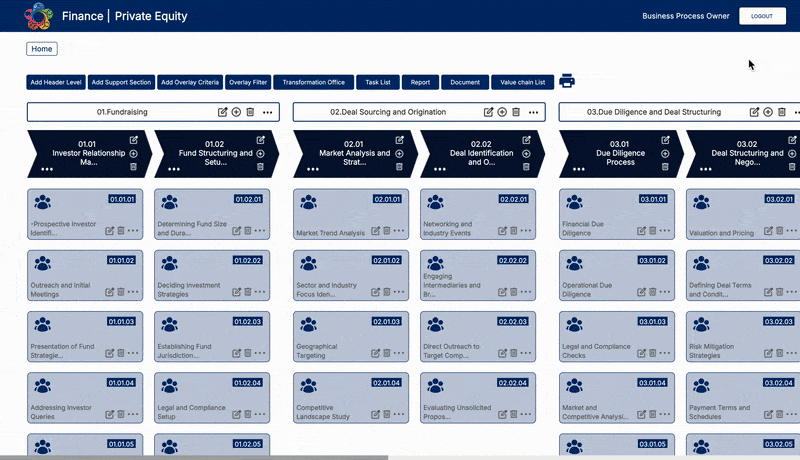
Benefits:
• Higher Returns on Investment (ROI): By improving operational efficiency
and aligning with strategic goals, portfolio companies generate higher
revenues, reduce costs, and become more valuable at exit, leading to higher
returns.
• Scalable Growth: A well-structured operating model supports rapid scaling of
portfolio companies, enabling expansion into new markets, increasing
production capacity, or acquiring new businesses.
• Improved Decision-Making: With real-time performance data and KPIs,
private equity firms can make informed decisions about resource allocation,
growth strategies, and potential risks, ensuring optimal portfolio
management.
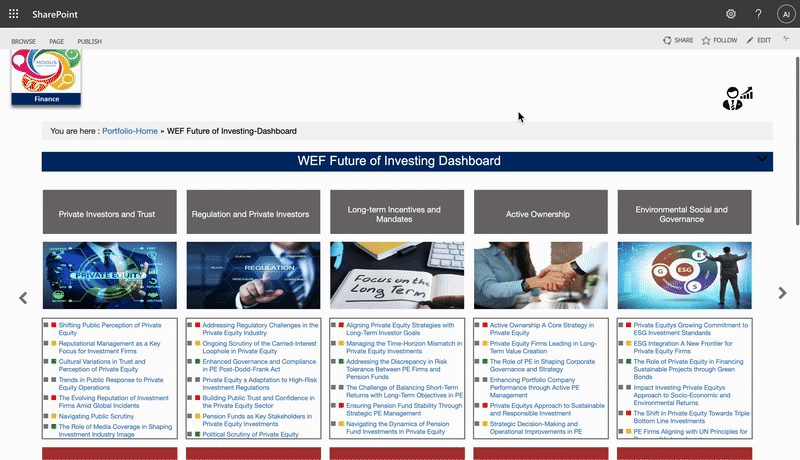
Benefits:
• Accelerated Transformation Execution: By providing standardized
frameworks and real-time visibility into progress, the module enables faster
execution of transformation initiatives, helping portfolio companies achieve
their goals more quickly.
• Higher ROI for Investors: The module facilitates the optimization of
transformation projects, leading to improved operational performance,
increased profitability, and ultimately higher returns for private equity
investors.
• Enhanced Decision-Making: With scenario planning, performance tracking,
and risk management tools, the module supports data-driven decision-
making, allowing private equity firms to optimize resource allocation and
strategic planning.
04 - The Transformation Assets and Portfolio Module - Discover and Transform
Leverage the Transformation Assets and Portfolio Module to drive successful and sustainable business transformations with clarity and efficiency.
Key Features:
• Centralized Asset Repository: The module stores all tools, methodologies,
templates, and best practices related to transformation initiatives across
portfolio companies in a single, accessible location.
• Portfolio Performance Tracking: Offers real-time dashboards and metrics
that track the progress of transformation projects across multiple portfolio
companies, including financial performance, operational improvements, and
milestones achieved.
• Standardized Methodologies: Provides out-of-the-box frameworks for
managing and executing transformation strategies (e.g., operational
improvements, cost reductions, digital transformations) across portfolio
companies, ensuring consistency.
• Resource Allocation Optimization: Tracks the allocation of resources—
capital, human, and technological—across transformation projects, ensuring
optimal use of assets to drive value creation efficiently.
Importance:
• Maximizing Value Creation: The module plays a critical role in managing and
driving transformation initiatives that increase the operational and financial
value of portfolio companies, ensuring maximum returns for investors.
• Operational Efficiency: By standardizing processes and providing centralized
access to transformation assets, private equity firms can execute
transformation projects more efficiently, reducing waste and improving
execution speed.
• Strategic Alignment: The module ensures that all transformation efforts
across portfolio companies are aligned with the private equity firm’s overall
strategic goals, including growth, scalability, and readiness for exit.
• Value Chain Analysis
• Business Model Analysis
• Transformation Strategy
• Transformation Mobilisation
• Planning Management
• Transformation Log Management
• Financial Management
• Communication Management
• Operating Model Management
• Process Design Management
• IT Design Management
• Build and Test Management
• Implementation Management
• Change Management
• Personal Development Assessments
• Training Management
• Organizational Design Management
• Transformation Review
• Optimization and Governance
05 - Organizational Change Management - Unite and Thrive
Utilize the Organizational Change Management module to unite your team and thrive through effective, sustainable change.
Key Features:
• Change Impact Assessment: OCM helps assess how strategic changes
(e.g., mergers, acquisitions, digital transformation) will impact employees,
culture, operations, and stakeholders across portfolio companies.
• Stakeholder Engagement: Involves active engagement of key stakeholders,
including management teams, employees, investors, and external partners,
ensuring alignment and buy-in for transformational initiatives.
• Change Communication Strategy: Develops clear communication plans to
inform and guide employees and stakeholders through the transition
process, ensuring clarity and minimizing confusion during the change.
Importance:
• Enabling Successful Transformation: Private equity-backed companies often
undergo significant changes, including restructuring, acquisitions, or digital
upgrades. OCM ensures these changes are implemented successfully and
efficiently.
• Faster Value Creation: Effective OCM helps private equity firms drive faster
value creation by ensuring that portfolio companies can adapt quickly to
strategic changes, whether operational, technological, or organizational.
• Mitigating Risk: Managing change effectively reduces the risk of operational
disruption, financial underperformance, or resistance from employees during
significant transitions, protecting the value of the investment.
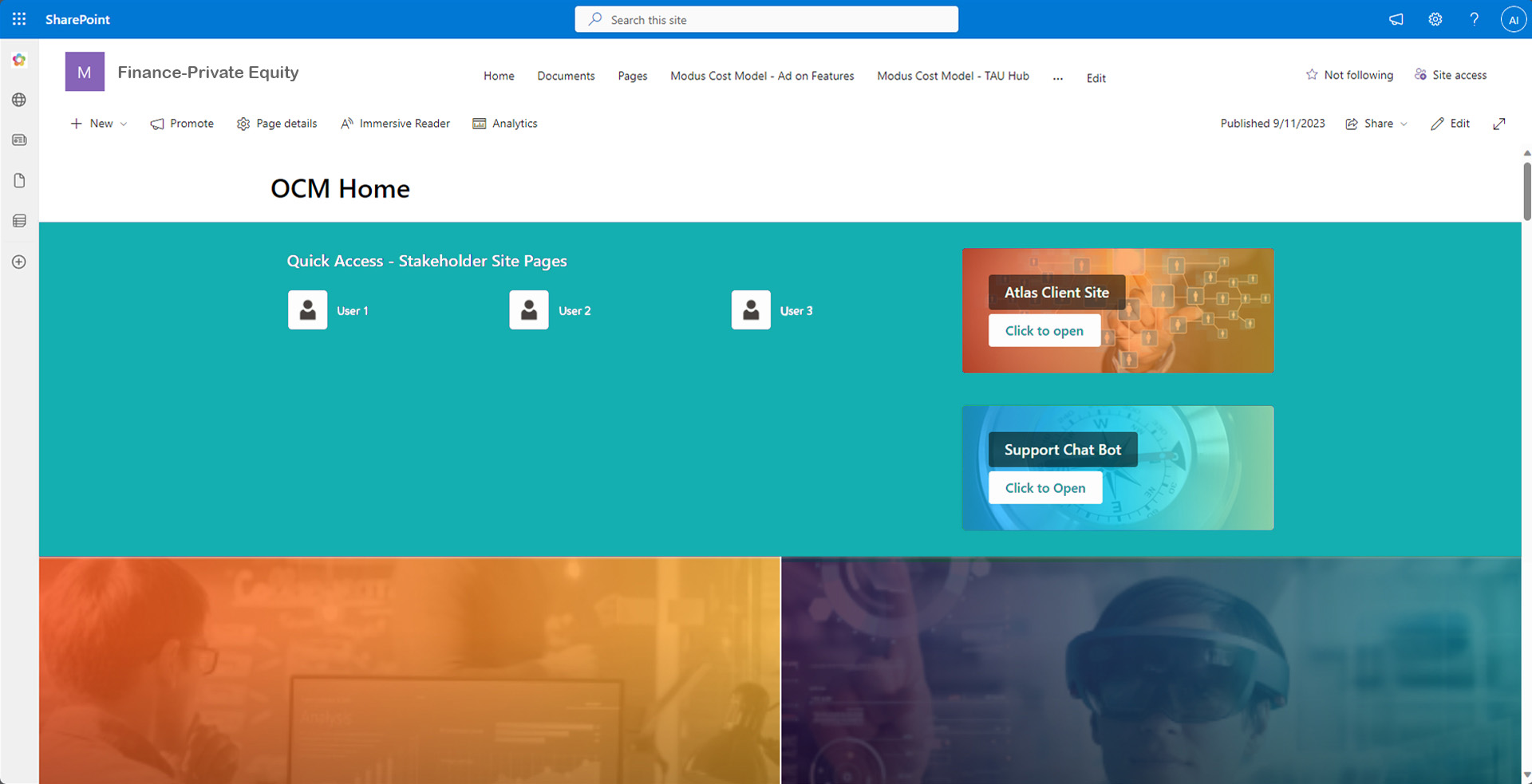
Benefits:
• Increased Operational Efficiency: By managing changes effectively, OCM
helps portfolio companies adopt new processes, technologies, or strategies
that improve efficiency, reduce costs, and streamline operations.
• Higher Employee Engagement: With proper communication, training, and
support, employees are more likely to embrace changes, resulting in higher
engagement, productivity, and lower turnover during and after the transition.
• Improved Financial Performance: OCM ensures that changes lead to
improved financial outcomes by minimizing disruptions, ensuring faster
adoption of new processes, and optimizing operational performance across
portfolio companies.
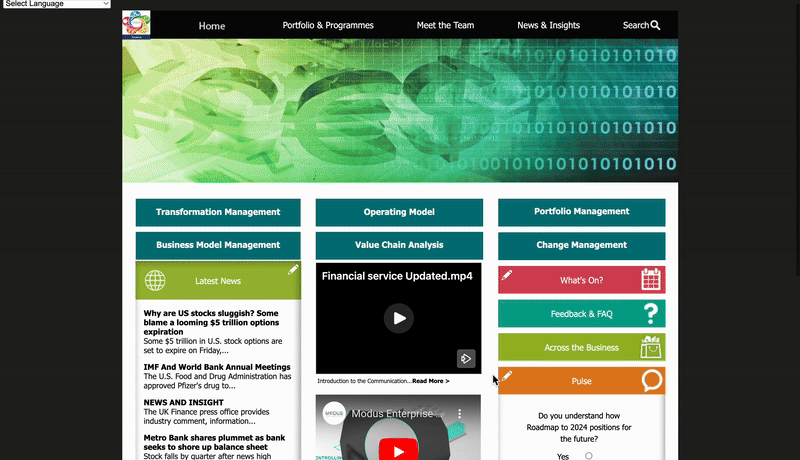
Benefits:
• Increased Efficiency: Centralizing communications and reporting streamlines
workflows, reducing the time spent on administrative tasks and improving
the overall efficiency of private equity firms and their portfolio companies.
• Stronger Investor Confidence: With real-time updates and transparent
communication, investors are more confident in the private equity firm’s
ability to manage the portfolio effectively and drive value creation.
• Better Collaboration: The hub promotes better collaboration between
portfolio company leadership teams, private equity professionals, and other
stakeholders, ensuring that all parties are aligned on key strategies and
objectives.
06 - Engagement Hub - Share and Guide
Utilize the Engagement Hub to streamline your communication, enhance team collaboration, and guide your organization through successful transformations.
Key Features:
• Centralized Communication Platform: The Engagement Hub acts as a
unified platform for all stakeholders—investors, portfolio company
management, and internal teams—to communicate and share information,
ensuring transparency and alignment.
• Real-Time Collaboration: Enables real-time collaboration between private
equity teams and portfolio companies, facilitating efficient decision-making,
strategy discussions, and issue resolution across different geographies and
time zones.
• Stakeholder Engagement Tracking: Tracks interactions with investors,
portfolio companies, and other partners, helping private equity firms monitor
the effectiveness of their engagement and ensuring all parties are aligned.
Importance:
• Improved Stakeholder Communication: Private equity involves multiple
stakeholders (investors, portfolio companies, advisors, etc.), making
seamless communication crucial.
• The Engagement Hub ensures transparency and alignment across all
parties.
• Centralized Information Access: A centralized hub consolidates all data,
performance reports, and communication in one platform, ensuring that
investors and portfolio companies have easy access to real-time information
and updates.
• Faster Decision-Making: The hub facilitates faster decision-making by
providing real-time performance metrics, streamlined communication
channels, and collaboration tools that enhance the agility of private equity
firms.
Transformation As Usual Capability Model
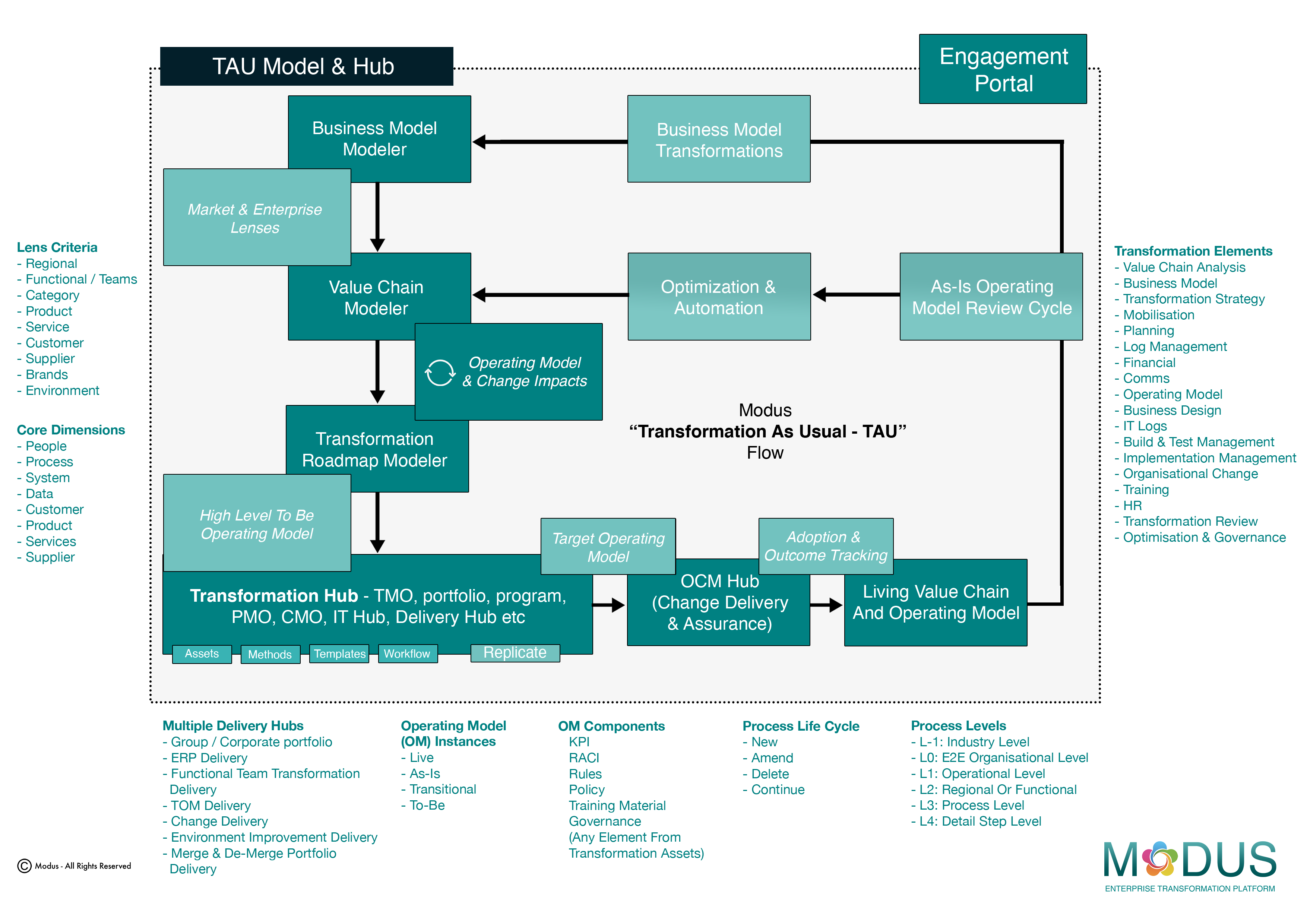
Individual and Team Capability Development
